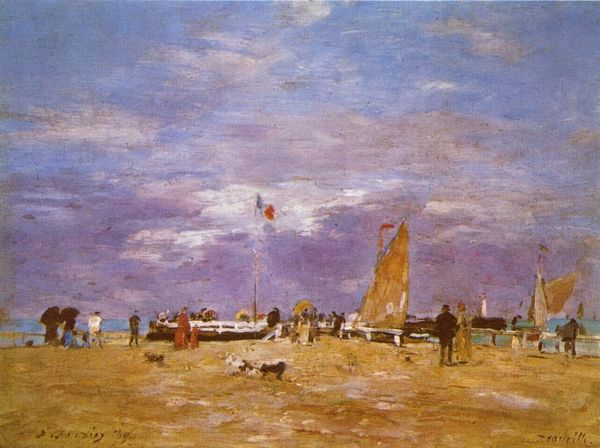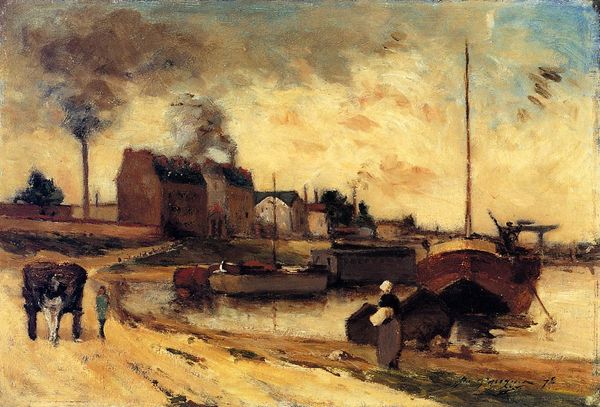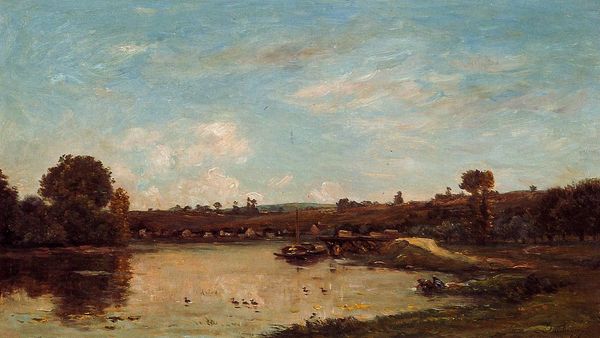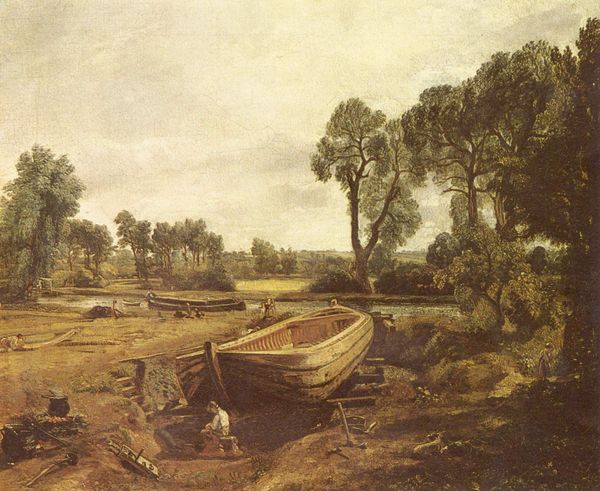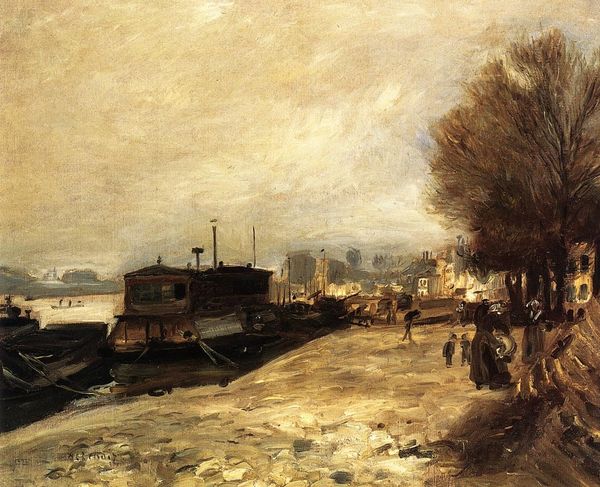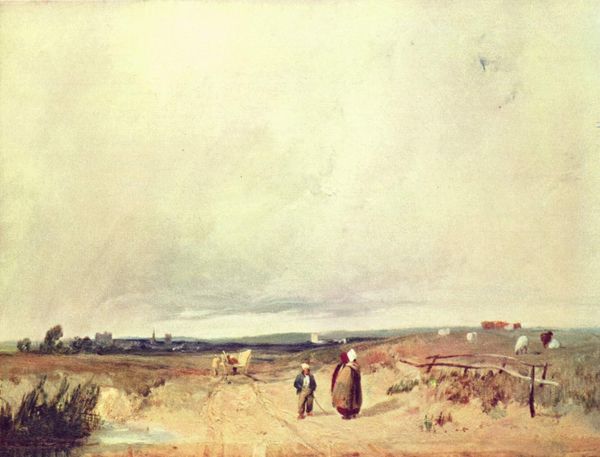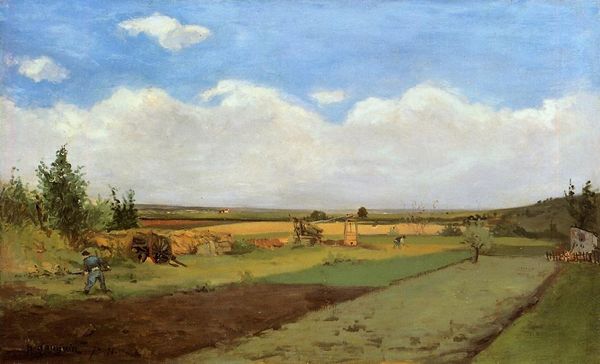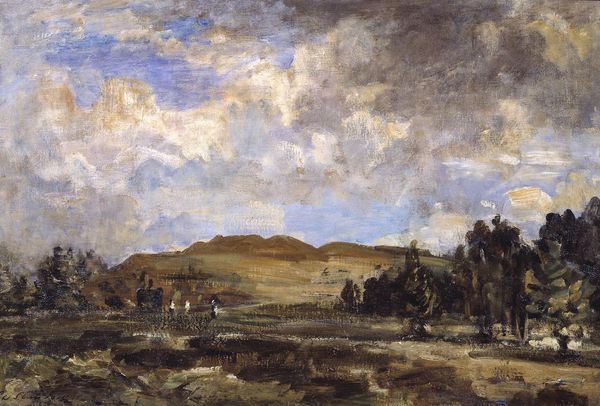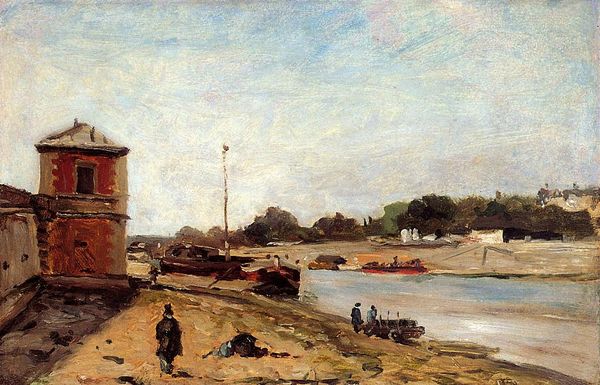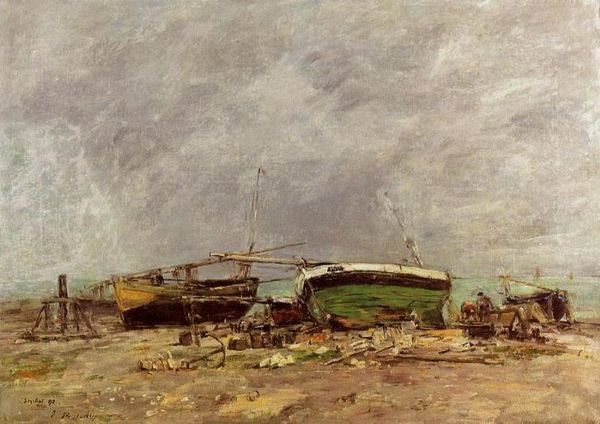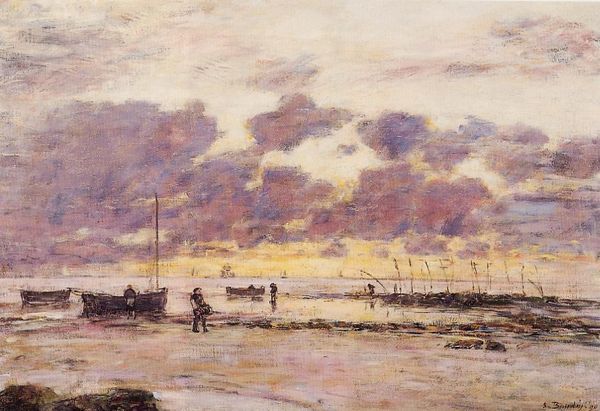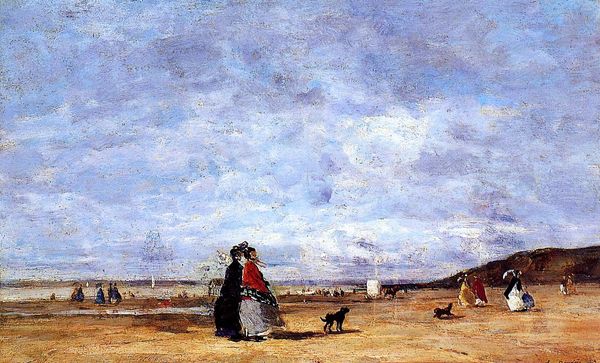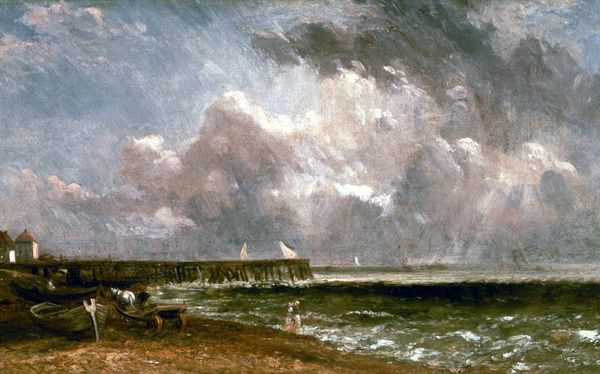
painting, oil-paint
#
painting
#
oil-paint
#
landscape
#
figuration
#
oil painting
#
romanticism
#
cityscape
#
watercolor
Copyright: Public domain
Curator: Bonington's "Water Basin at Versailles", dating from 1826, captures a specific moment in time but also invites broader reflections on power, leisure, and representation. The artwork, rendered in oil paint, offers an image that encapsulates early 19th century societal norms and aesthetics. Editor: It’s certainly striking! The initial impression is almost dreamlike. The hazy atmosphere and warm color palette give it a feeling of a bygone era, softened by nostalgia. The eye is immediately drawn to that vast sky – overwhelming, even. Curator: Precisely. Bonington’s manipulation of light is key. Consider how it plays across the water, the sculptures, the figures themselves. Versailles, as a site, embodies the power of the French monarchy, but in Bonington's portrayal, we see the grounds repurposed as a space for public leisure, suggesting shifts in the socio-political landscape after the Revolution. How do you read the presence of the figures populating the foreground? Editor: Their placement almost flattens them, integrating them into the scene's overall design rather than setting them apart as individual entities. But let's unpack that a little...their clothing is highly indicative of status, particularly the women with their elaborate hats and dresses. Bonington seems interested in showing this social stratification within what should ideally be an open, accessible public space. This dynamic raises issues about access and privilege, suggesting a critique of post-revolutionary society. It looks so romantic, but at what cost to the oppressed? Curator: A pertinent question. It raises issues around visibility, power and spectatorship. Bonington chooses a composition that, while beautiful, quietly documents the complexities and the performance of social classes during this era of rebuilding France. By observing the scene, do we not take part in perpetuating a system of hierarchy and class structures? What does this tell us about what constitutes a legitimate subject and how should history consider that in today’s museums? Editor: A very insightful way to consider it, really putting the onus on the spectator to confront issues of inequity and perhaps inspiring action towards fairer systems. I feel so drawn to question and change society now more than before! Curator: It's through that awareness of art and power, image and representation, that artworks like this maintain their urgent resonance for contemporary audiences, sparking not only appreciation but active re-evaluation.
Comments
No comments
Be the first to comment and join the conversation on the ultimate creative platform.
